As part of the Art Fund New Collecting Award project Northern Modernist Jewellery 1945 – 1978, I have had the opportunity to engage with fellow curators, specialists and dealers within the field of Modernist Jewellery. At the beginning of September 2017, I was able to visit Stockholm to meet with some of the curators and specialists who have been advising me and supporting the acquisition of material for the New Collecting Award.
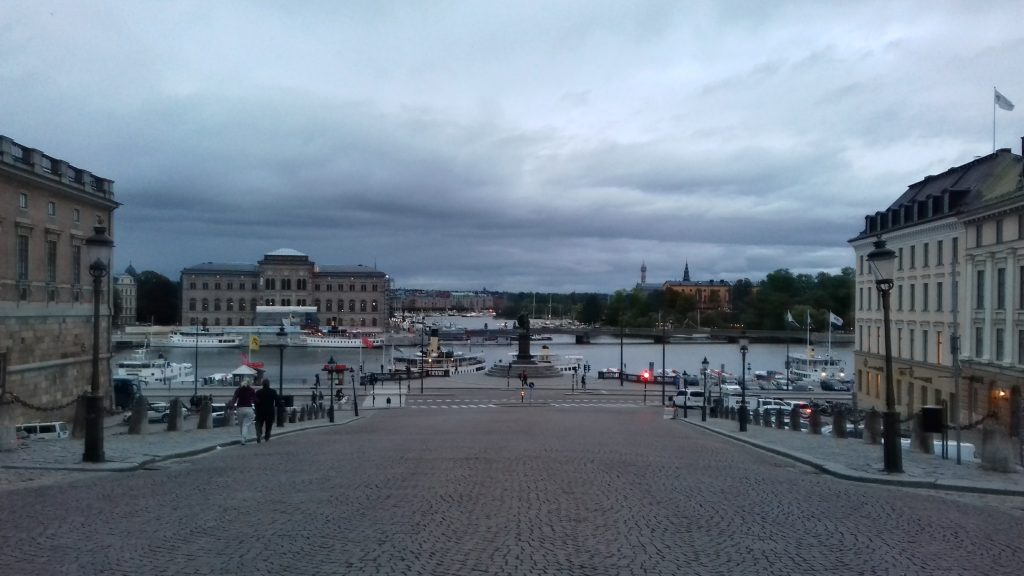
Sweden had a strategic influence within Nordic Modernist Jewellery. This was mainly due to the work of the Swedish Society of Industrial Design, who greatly supported Swedish design by initiating measures to renew trade, nurture young talent and position Swedish designers in all areas through a series of international trade fairs held within Sweden. This, in turn, led to the design movement known as Scandinavian Modernism, which dominated decorative art and design in post-war Europe.
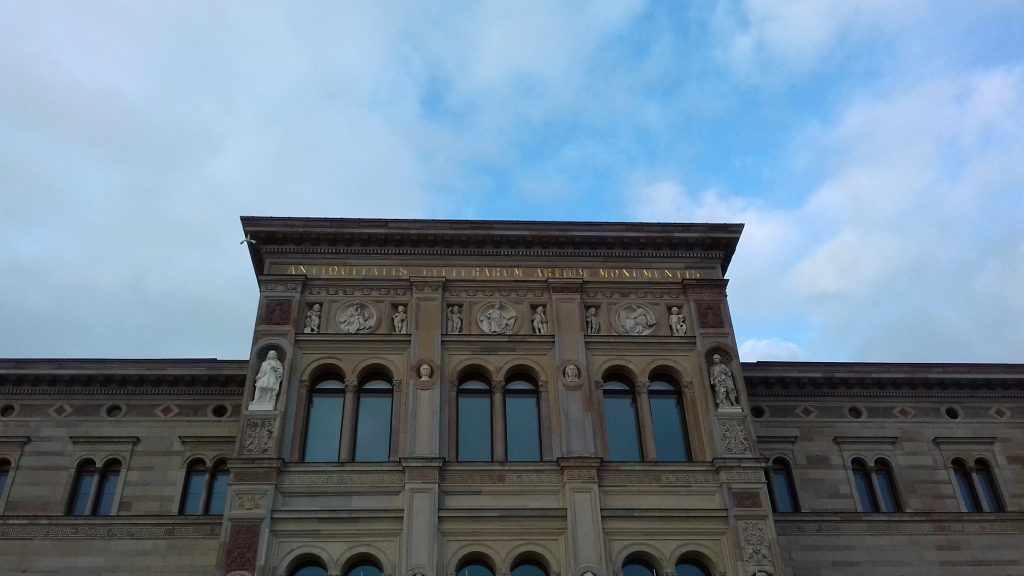
Currently undergoing a major restoration and development project, the Nationalmuseum Sweden is home to over 30,000 objects of applied art, design and industrial design from the 14th century to the present day. During my visit, Cilla Robach, Ass. Prof. and First Curator at the Nationalmuseum, very kindly agreed to meet me and show me their collection of Modernist Jewellery. Robach is a specialist within the area of Swedish applied arts from the latter half of the 20th century and has written many publications celebrating the Association of Swedish Industrial Craftsman that was established in the 1960s.
Many of the jewellers that I have been researching were former members of this Association and are represented within the Nationalmuseum Sweden’s significant Modernist jewellery collection.
Amongst the collection are remarkable examples from some of Sweden’s leading female jewellery designers and makers.
Vivianna Torun Bülow-Hübe (1927 – 2004)
Such as the amazing torque and pendant designed and made by Vivianna Torun Bülow-Hübe. Known simply as Torun, she was a true pioneer in every sense of the word, a woman working in what was a man’s world; she was friends with Picasso and designed pieces for Billie Holiday. Her jewellery is essentially an interpretation of nature. She loved organic forms like leaves, pools and spirals, and her pieces flow with a sensuous life of their own.
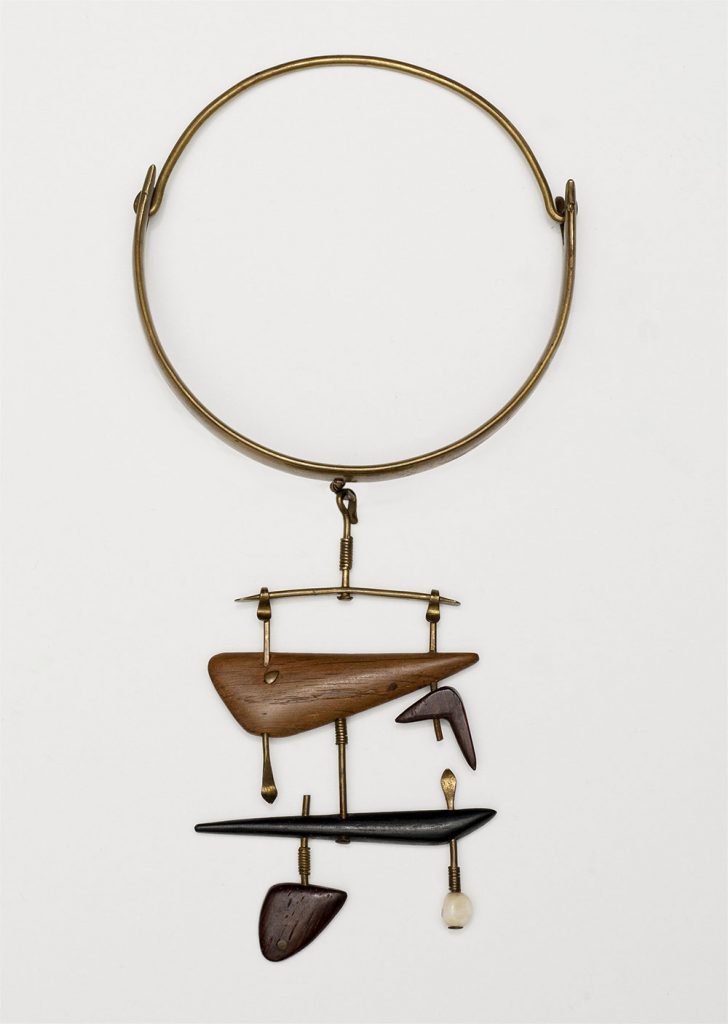
She worked primarily in silver and gemstones, like amethyst and moonstone, and hated the idea of designing for rich women who treated jewellery “as a sign of their husbands’ fortunes”.
This piece is one of her very early designs, incorporating a Calderesque pendant of polished wood on a simple brass neck ring. It was an honour to view this piece and to see how small it really is. Torun used her own body as a guide on sizing so this piece, in reality, is very tiny.
Theresia Hvorslev (b.1932)
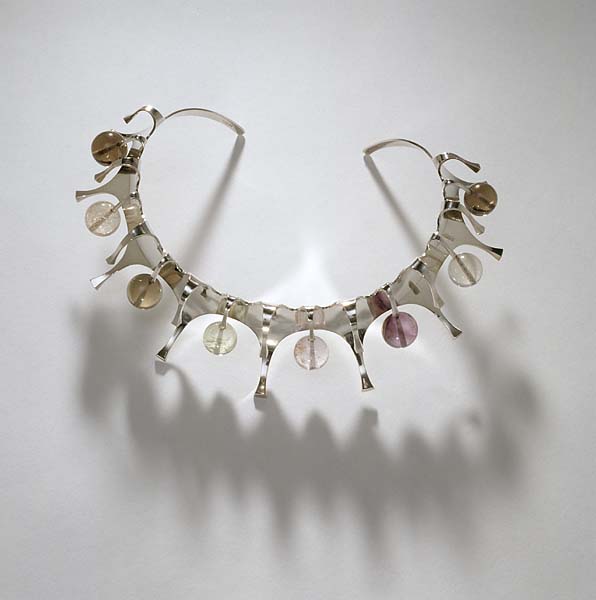
This stunning neckpiece from 1965 is by Theresia Hvorslev, who was apprenticed at Georg Jensen in Copenhagen, and the Swedish design group Bernadotte & Bjørn.
Her work is characterised by plain reflective surfaces, finely measured strict lines and wing-shaped forms that express the character of the metal. Like many of her contemporaries, her love of Nordic nature was an essential part of her design ethos, which she chose to capture within the use of natural themes and her attention to the surface of her chosen metal.
This neckpiece has a very strong form, with its assertive stylised nails that would jut out from the wearer’s neck.
Ibe Dahlquist (1924 – 1996)
Ibe Dahlquist ranks as one of Sweden’s most prominent contemporary silversmiths. Her earliest work is noted for its simple geometric forms and incorporating fossils and rocks picked on Gotland beaches. She was exhibited within Graham Hughes noted International Modern Jewellery exhibition at Goldsmiths’ Hall in 1961.
From 1965, Dahlquist was employed by George Jensen and her later designs consisted of repeated geometric forms.
Inger Wästberg
After a quick trip on Stockholm’s underground (sometimes referred to as “the world’s longest art gallery”, as its stations have been decorated with paintings, installations, mosaics and sculptures by 150 artists since the 1950s), I arrived in Södermalm, where I met with freelance jewellery curator, writer and collector Inger Wästberg.
Inger has been championing and collecting Contemporary Swedish jewellery for the last 40 years, initially as the wife of a diplomat and Ambassador, then as a freelance writer and curator. Inger has an outstanding collection of contemporary jewellery, with many pieces specially commissioned directly from the artists. For our meeting, she chose to wear pieces she had commissioned the Modernist jeweller Ray Urban to create for her in the 1970s.
Inger has very generously supported this project over the last two years with advice, and assisting with the valuation and authentication that allowed for the acquisition of the unique necklace by Claës Giertta. This was one of my first acquisitions for the project and followed a series of emails with Inger into Swedish Modernist designers, where she first drew my attention to the work of Giertta.
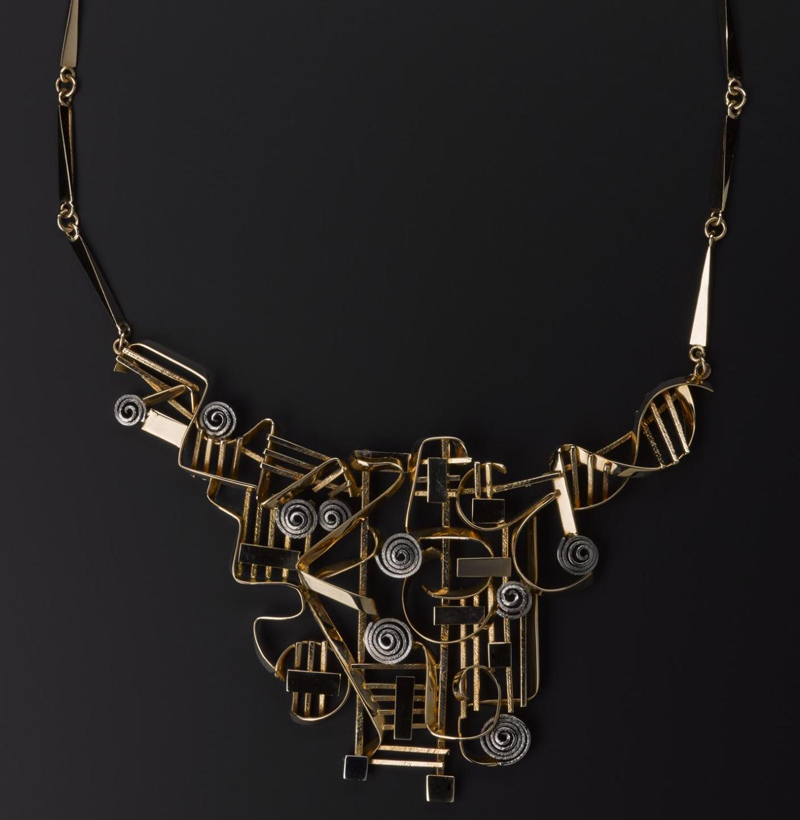
For our meeting, she had very generously invited me into her home, which has a spectacular outlook over Stockholm above the Riddarfjärden. Here we sat and drank coffee and nibbled Swedish pastries whilst discussing her relationships with some of Sweden’s leading jewellery designers and makers, and to look at those she feels have been overlooked and those who have been forgotten.
Modernity
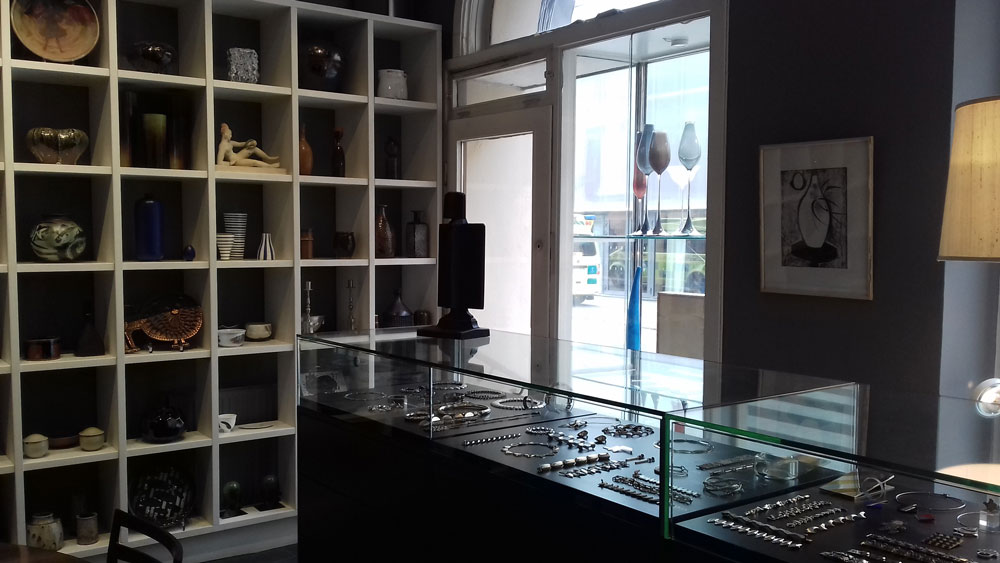
The following day I headed over to the Östermam district of Stockholm, where Modernity is based. Modernity is one of Northern Europe’s leading galleries that specialise in the works of some of the most renowned figures in Scandinavian design from the 20th century. The gallery features works in furniture, ceramics, glass, lighting and jewellery.
They have also notably supplied pieces to international collectors and museums, such as MOMA and Cooper Hewitt, Smithsonian Design Museum in New York, LACMA in Los Angeles, Nationalmuseum in Stockholm, as well as National Museums Scotland.
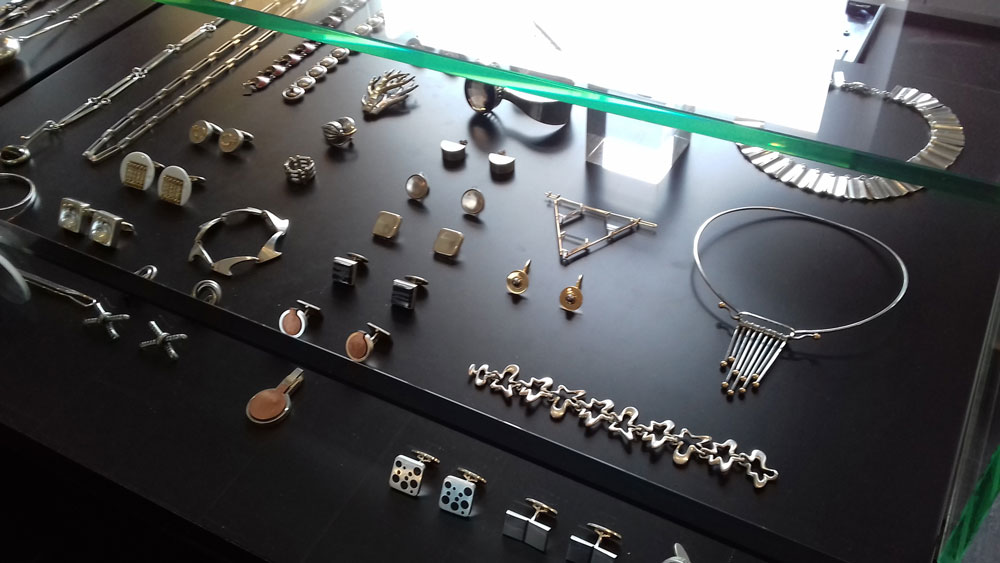
I met with Andrew Duncanson, the owner and Director of Modernity, who originates from Edinburgh. Over the last 20 years, Duncanson has become a renowned specialist in Scandinavian design history. Here we discussed the pieces he currently holds, and some of the history of pieces he has helped facilitate, notably the Torun torque, which was acquired by Nationalmuseum.
As with other specialist dealers, he knows some of the leading collectors within the field and also is ideally placed when objects are about to come onto the market. The relationship we have with Modernity has allowed National Museums Scotland to acquire significant pieces for the collection.
PLATINA Gallery
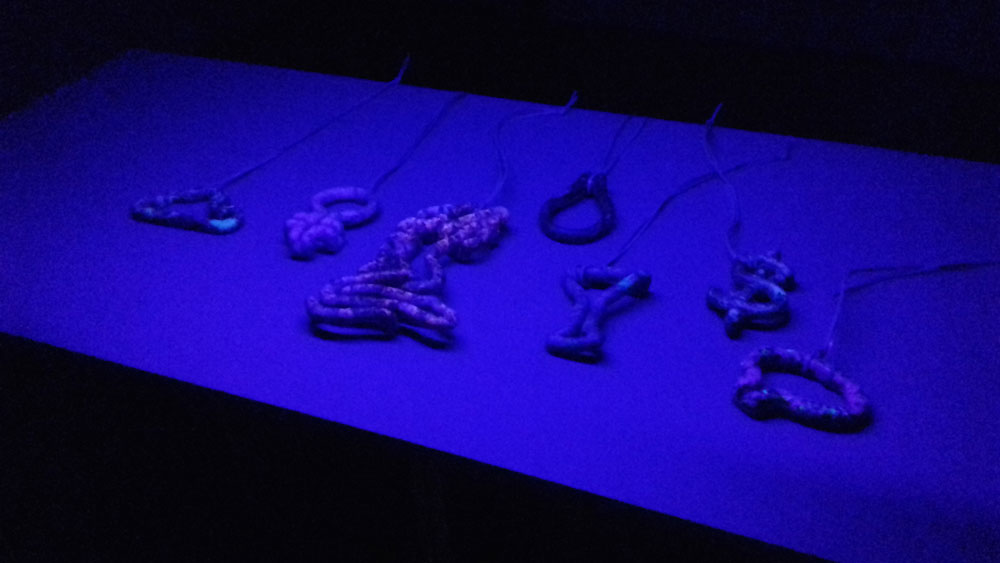
During my stay in Stockholm, Cilla had recommended I visit PLATINA Gallery. Founded in 1999, and run by the contemporary jeweller, curator and writer Sofia Björkman, the gallery represents and exhibits some of the leading international contemporary jewellers.
I was able to meet Sofia and fellow jeweller Agnieszka Knap at PLATINA to learn more about some of the artists they represent and view their latest exhibition Knock Off. This featured the work of American jewellery artist Mallory Weston and American born, Swedish based jewellery artist Adam Grinovich.
Sofia established the gallery shortly after graduating, with a mind not only to support her own practice but those around her. With a focus upon art jewellery, you can view works by leading artists such as Felike van der Leest, Karin Roy Andersson and Heejoo Kim.
Her current body of work is created through multiple layers of laser cut silver, almost knitted together like birds’ nests; the resulting work has a dark yet ethereal edge to it, which is totally captivating.
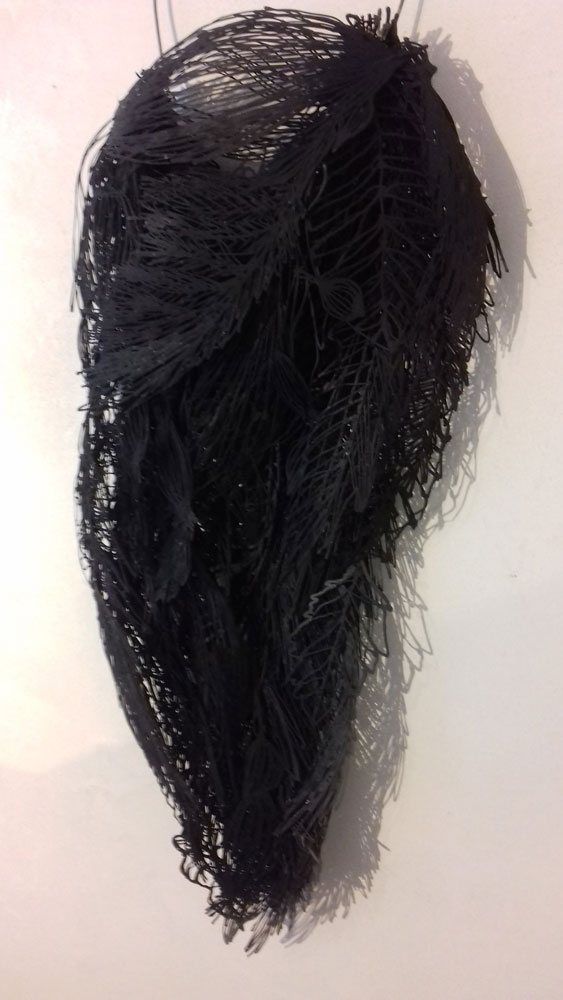
So after a quick 48 hours in Stockholm, I headed back to the airport to catch a flight to my next location Finland, which you can read about in my next blog post.
